Velvet Shank (Flammulina velutipes)
#Mushrooms, #Nature, #Flammulina, #Microscopy
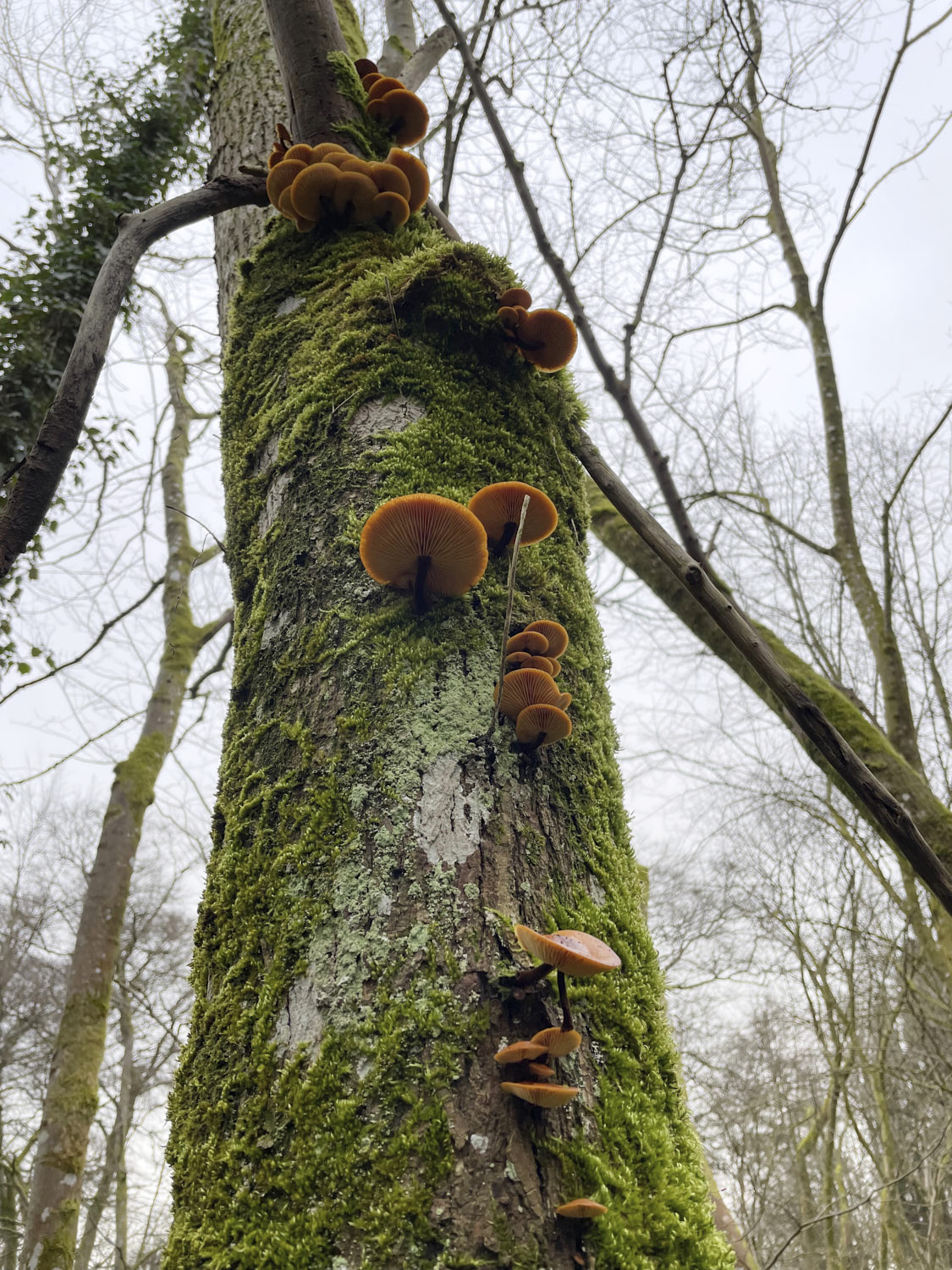
A rather pretty sight, the velvet shank is one of the mushrooms that fruit in the winter and is most commonly found on dead elm trees (it can also be found in a supermarket, under the Japanese name ‘Enoki’, though the commercially grown specimen look nothing like the ‘real thing’ due to being grown in darkness and in bottles). The English name comes from the dense, velvet-like, hair covering the stem; it turns dark as the mushroom ages, in a lovely contrast to the orange cap.
The cap is tacky, turning slimy when wet, with the firm and tough, though rather thin, stipe often offset due to how the mushroom grows.
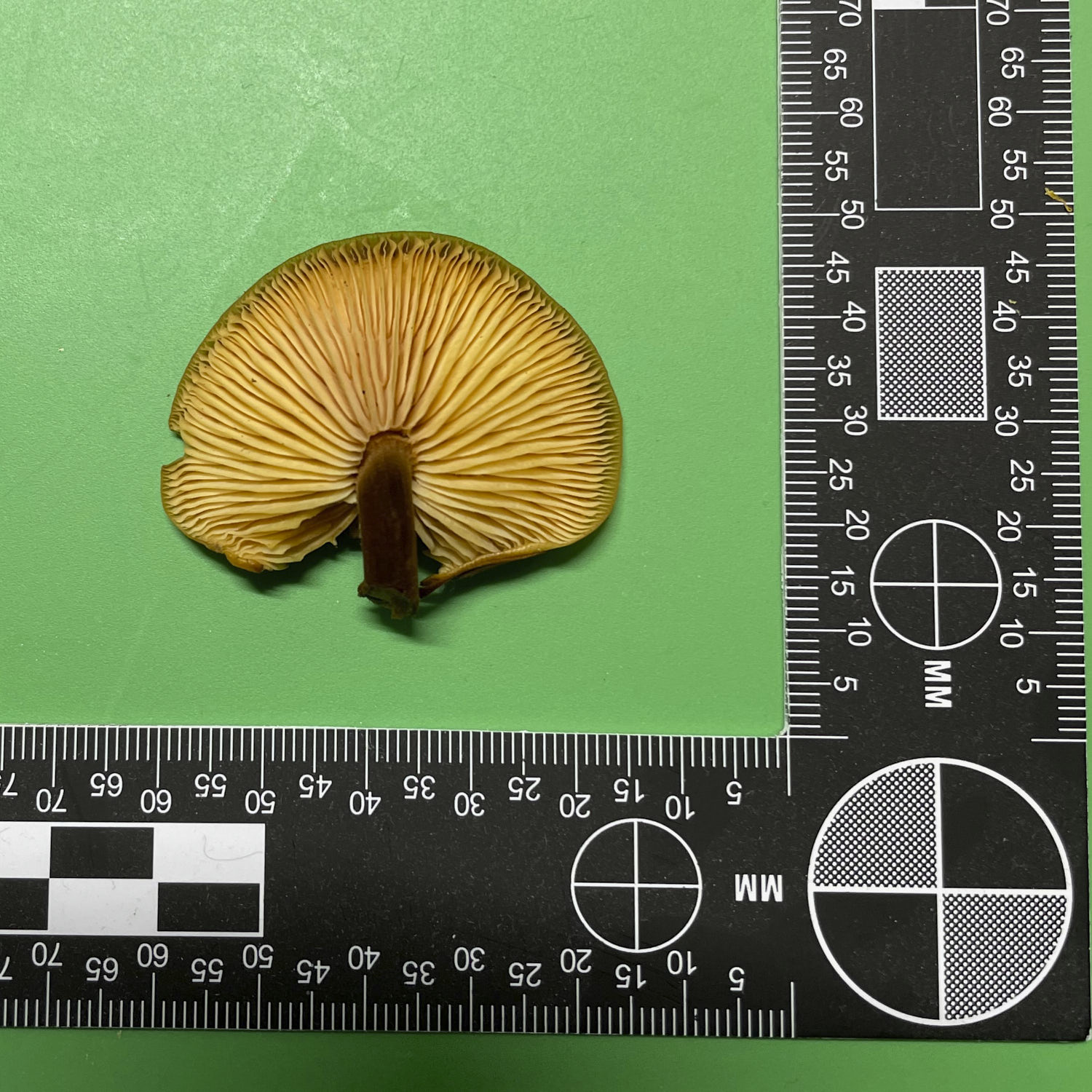 The adnate gills are initially white, turning yellow as the mushroom ages. Spore print is a light cream colour.
The adnate gills are initially white, turning yellow as the mushroom ages. Spore print is a light cream colour.
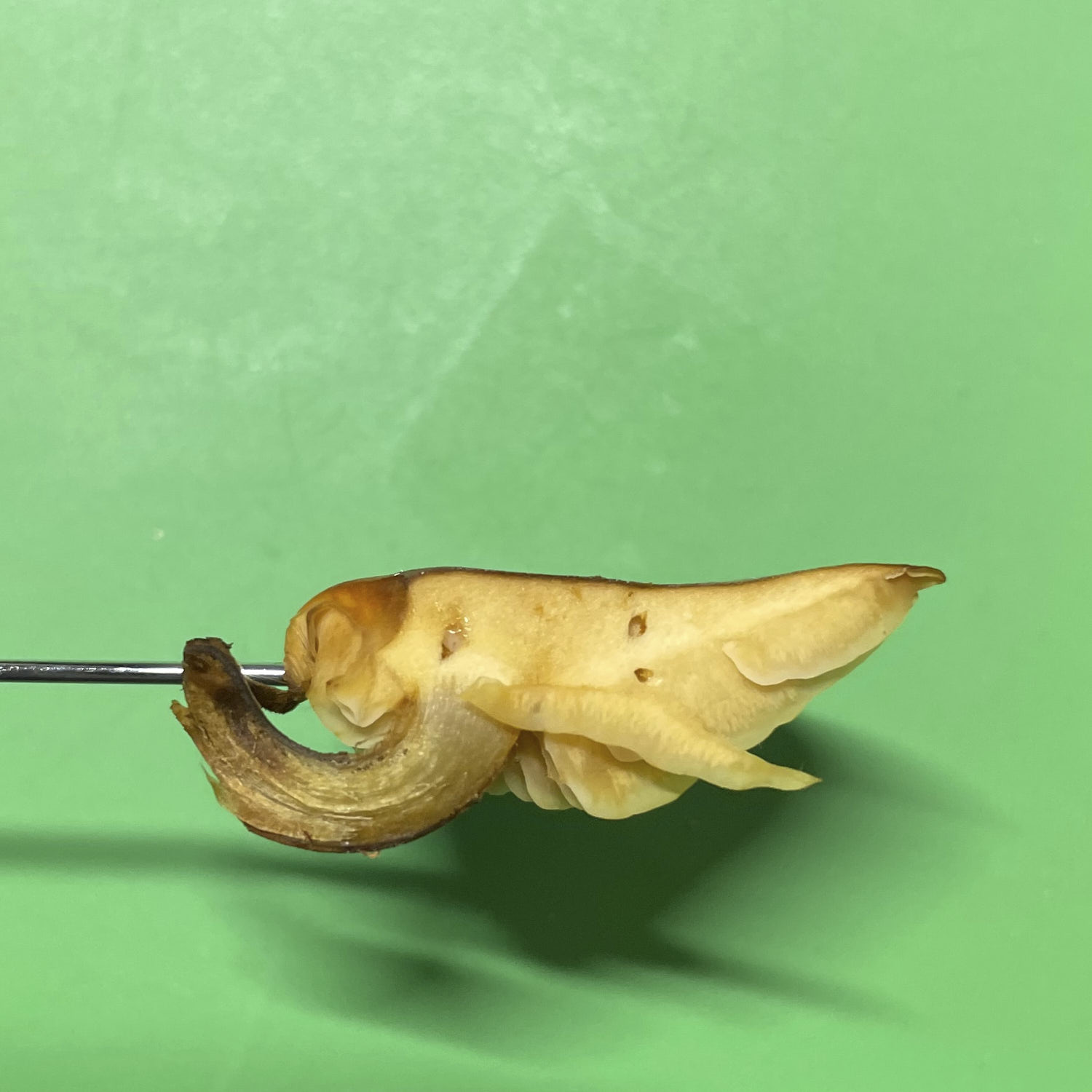 The flesh is yellow.
The flesh is yellow.
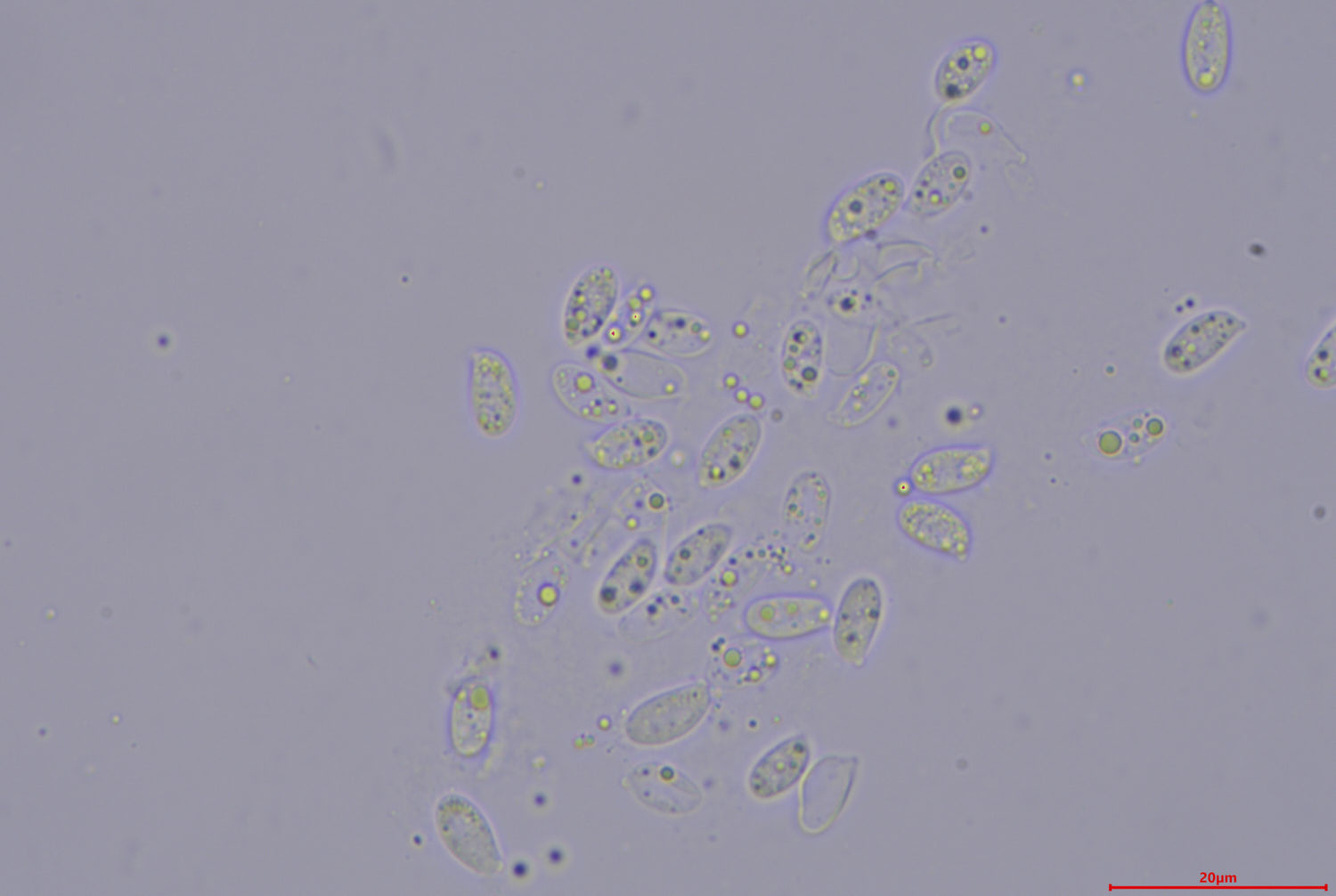 The spores are smooth, ellipsoid and inamyloid. In this specimen they averaged 7.5 x 3.8 microns, with an average Q of 1.97 (1.63 - 2.38). The spores differentiate this mushroom from the closely related Willow Velvet Shank (Flammulina elastica), which has longer spores with a Q typically in the 2.5 - 3.0 range.
The spores are smooth, ellipsoid and inamyloid. In this specimen they averaged 7.5 x 3.8 microns, with an average Q of 1.97 (1.63 - 2.38). The spores differentiate this mushroom from the closely related Willow Velvet Shank (Flammulina elastica), which has longer spores with a Q typically in the 2.5 - 3.0 range.
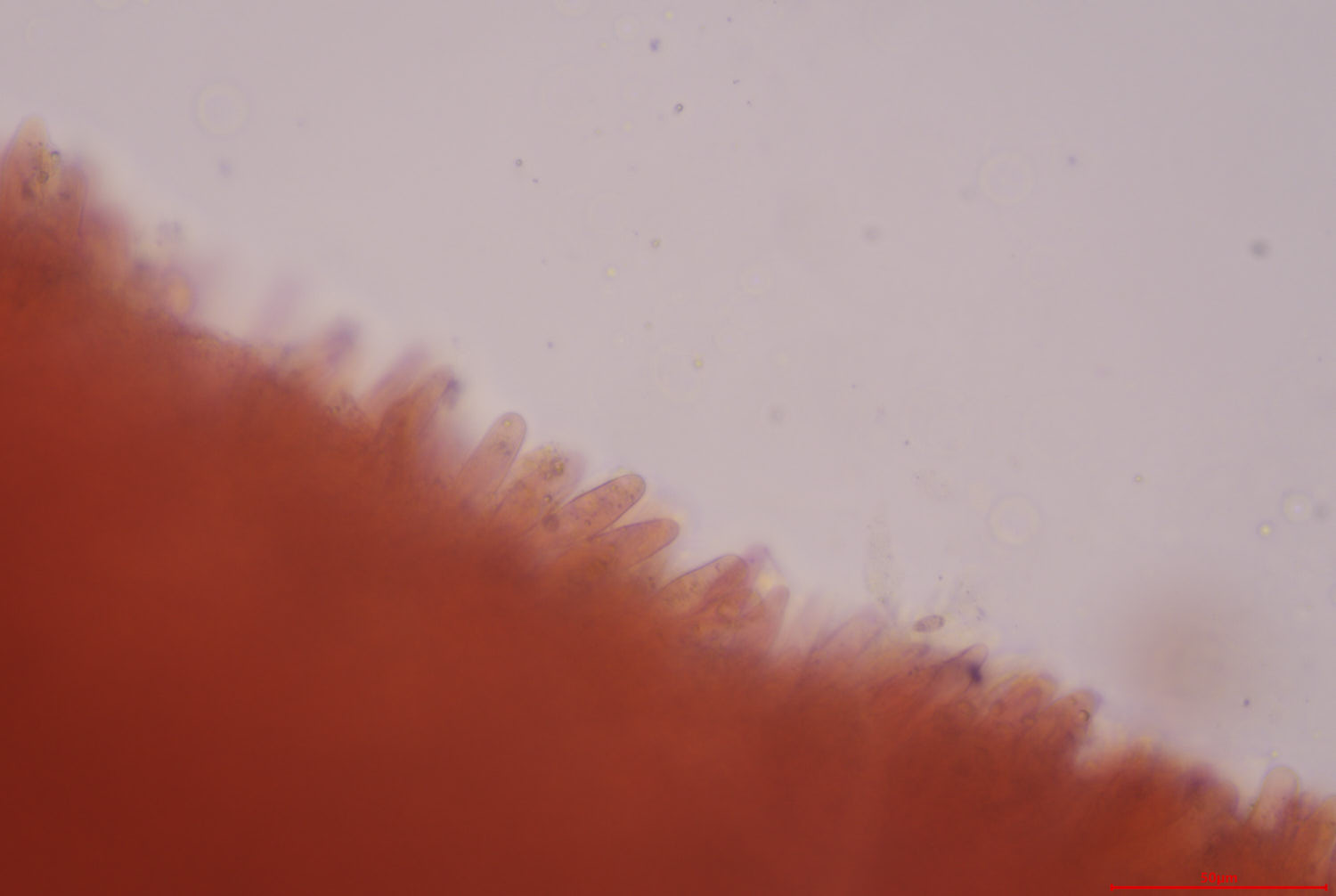 Gill edge (dyed in Congo Red) under a microscope (40x lens), showing the cheilocystidia cells.
Gill edge (dyed in Congo Red) under a microscope (40x lens), showing the cheilocystidia cells.
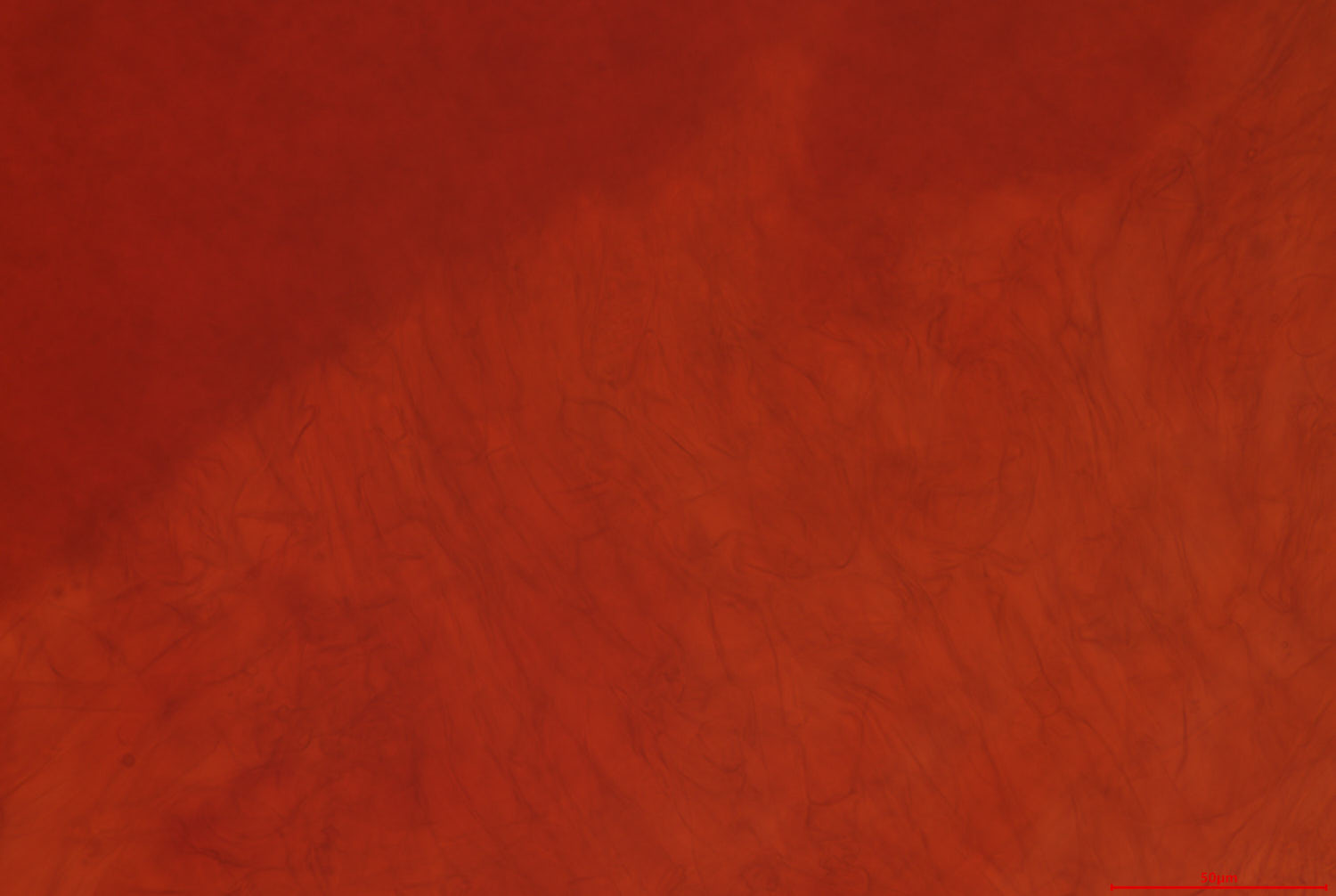 The gill flesh (trama) is made of a network of hyphae, which show clamps at the connection points.
The gill flesh (trama) is made of a network of hyphae, which show clamps at the connection points.
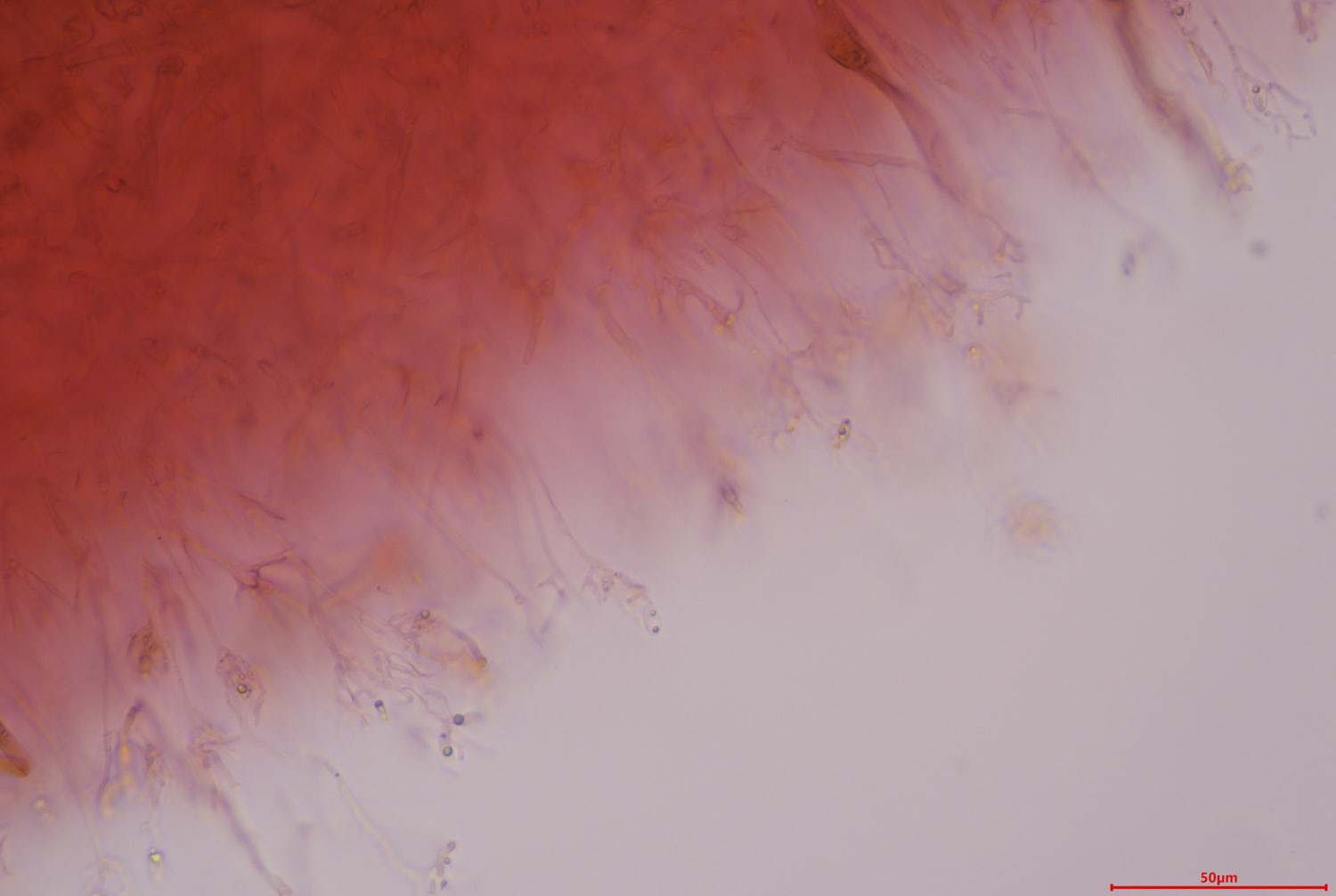 The cap surface under a microscope, showing the transition from the dense cap skin (pileipellis) into the slime layer (ixocutis). [Note: the image is ‘upside down’]
The cap surface under a microscope, showing the transition from the dense cap skin (pileipellis) into the slime layer (ixocutis). [Note: the image is ‘upside down’]